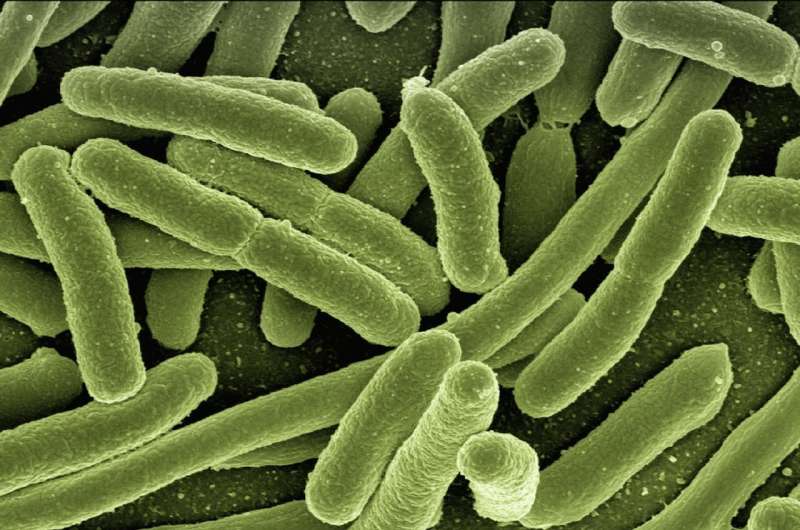Credit: CC0 Public Domain
Research by scientists into why some bacteria have different shapes has found that a curved shape can make it easier to find food.
The findings pose questions around whether disease-causing bacteria have different shapes.
Life Sciences researchers at the University of Lincoln conducted computer simulations to compare the swimming of differently shaped bacteria. Results showed that a curved shape can be beneficial for efficient swimming and for finding food through the use of chemical trails (known as chemotaxis)—but at the expense of higher cell construction costs.
This indicates that some bacteria species may balance the cost and benefits of their shape, depending on their environment and activity levels.
Before now it has not been understood what determines the different shapes of bacteria. While the shape of large creatures is driven by the effects of gravity and streamlining, for microscopic organisms these do not have such an impact.
Prof. Stuart Humphries, Professor of Evolutionary Biophysics at the University of Lincoln, said: "This work opens the door to asking a number of questions, for instance whether disease-causing bacteria have different shapes, or if different cell shapes improve the abilities of microbes we harness for industrial purposes".
Prof. David Smith, Professor of Applied Mathematics at the University of Birmingham said: "This research shows how state of the art maths and supercomputing simulation, used alongside extensive survey of a wealth of microscopy data, enables us to explore and explain aspects of the immense diversity of the living world which have hitherto been impossible."
More information: Rudi Schuech et al, Motile curved bacteria are Pareto-optimal, Proceedings of the National Academy of Sciences (2019). DOI: 10.1073/pnas.1818997116
Journal information: Proceedings of the National Academy of Sciences
Provided by University of Lincoln
























